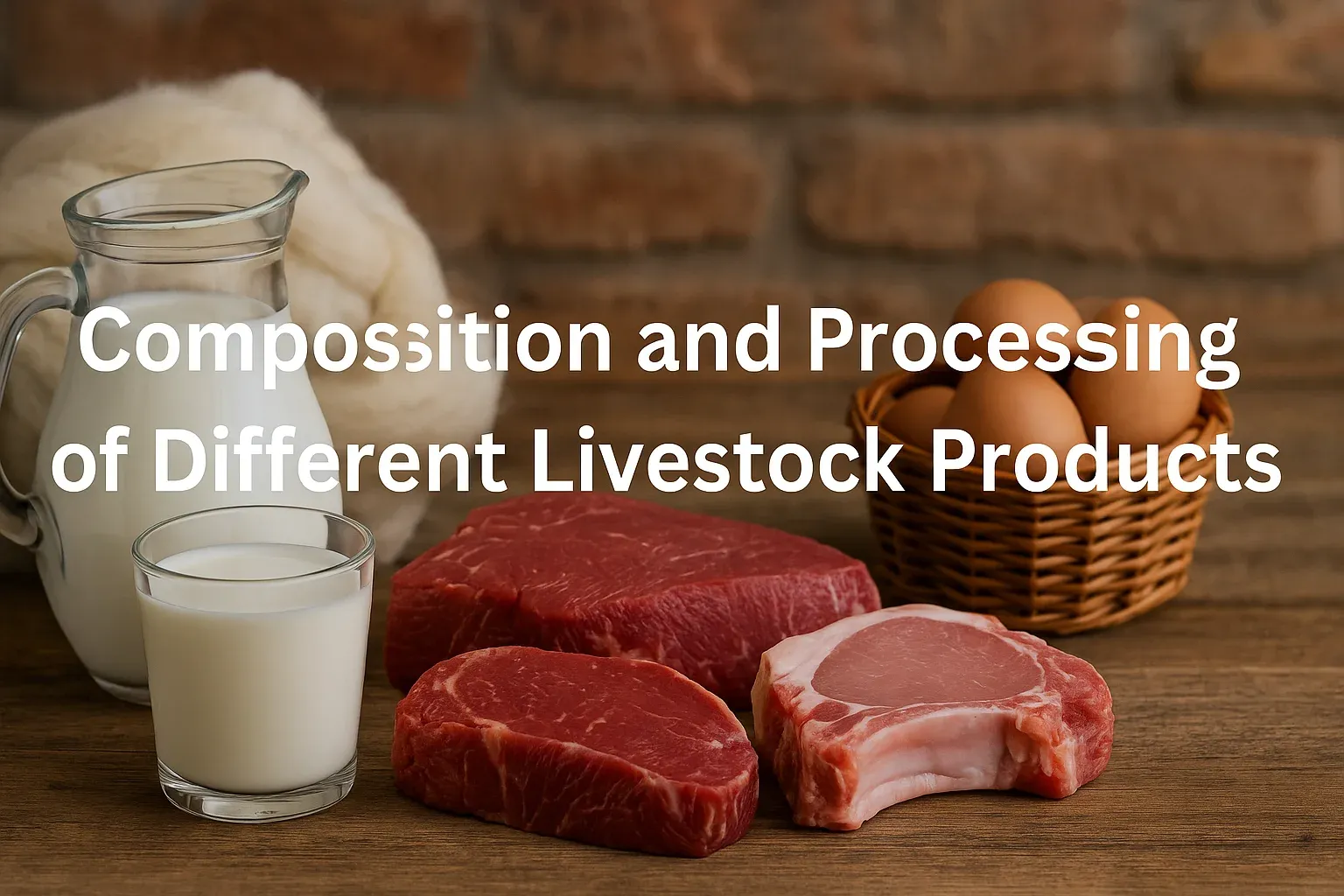🥛 1. Milk
Composition of Milk:
- Water: 86-88%, serving as the medium for other components.
- Fat: 3-6%, providing energy and aiding in the absorption of fat-soluble vitamins.
- Proteins: 3.2%, mainly casein (about 80%) and whey proteins, essential for growth and development.
- Lactose (Milk sugar): 4.5-5%, the primary carbohydrate in milk, which provides energy.
- Minerals: 0.7%, including calcium, phosphorus, potassium, and trace elements like zinc and magnesium.
Processing of Milk:
- Collection & Filtration: Removing physical impurities and cooling immediately.
- Pasteurization: Heated to 72°C for 15 seconds to destroy pathogens.
- Homogenization: Fat globules are broken down for uniform distribution.
- Packaging: Packed in sterile conditions using bottles, tetra packs, or plastic pouches.
- Further processing: Cheese, curd, butter, ghee, condensed milk, and milk powder.
🥩 2. Meat
Composition of Meat:
- Water: 65-75%, contributes to texture and juiciness.
- Protein: 18-22%, includes myofibrillar, sarcoplasmic, and connective proteins.
- Fat: 1-10%, varies with animal and cut.
- Vitamins & Minerals: Rich in iron, zinc, phosphorus, and B-vitamins (B12, niacin, riboflavin).
Processing of Meat:
- Slaughtering & Dressing: Hygienic removal of inedible parts.
- Chilling & Aging: Stored at 0–4°C for tenderness and safety.
- Cutting & Deboning: Separated into cuts and boneless parts.
- Preservation: Frozen, cured, dried, smoked, or canned.
- By-products: Organs, blood, and bones processed for other uses.
🥚 3. Eggs
Composition of Eggs:
- Water: 74%, mostly in the albumen.
- Proteins: 13%, ovalbumin and yolk proteins.
- Fats: 11%, mainly unsaturated fats in the yolk.
- Minerals: Calcium, phosphorus, iron, selenium, iodine.
- Vitamins: A, D, E, K, and B-complex vitamins.
Processing of Eggs:
- Collection & Grading: Sorted by size and shell integrity.
- Washing & Sanitizing: Removal of contaminants.
- Storage: Refrigerated at 4–7°C.
- Further processing: Liquid, powdered, or pickled eggs.
- Packaging: Trays/cartons with date labeling.
🧶 4. Wool
Composition of Wool:
- Protein (Keratin): Main structural protein made of sulfur-rich amino acids.
- Moisture: 10-17%, helps maintain flexibility and insulation.
- Fats/Wax: Contains lanolin which is waterproof and has cosmetic value.
Processing of Wool:
- Shearing: Annual removal of fleece using clippers.
- Scouring: Washing fleece to remove dirt, sweat, and grease.
- Carding: Aligning fibers into strands.
- Spinning: Twisting fibers into yarn.
- Finishing: Dyeing, weaving, and converting into textiles or garments.

